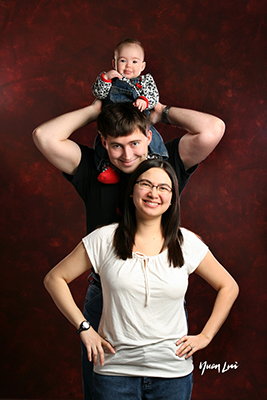Alexandra

Microbiology
I‘ve always been interested in how biological systems function. When I was thirteen, Stargardt’s Disease reduced my visual acuity from 20/20 (perfect vision) to 20/200, the threshold for legal blindness. Suddenly I was a student with a visual impairment.
One of the accommodations offered to me was waiving core math and science classes. I was stunned. I declined that offer. I soon learned that there were very few visually impaired students in my high school and even fewer who had pursued math and science. That got me fired up, and I think that’s where my journey in STEM first started.
I worked closely with my teachers to make classes and labs accessible. I enrolled in a college-preparation program DO-IT Scholars, which turned out to be an incredibly useful resource. I received encouragement to pursue college and a career in science, learned about self-advocacy, and received advice from staff, mentors, and other participants.
My tenth grade biology teacher was particularly inspiring. To enhance our labs, she joined a program to borrow equipment from a well-known, local cancer research center. I was really excited to visualize DNA on a gel, but I had great difficulty navigating the clear pipette tip into the tiny gel wells. We spent several hours practicing by gently probing the edges of the wells instead of locating them visually, a technique I would utilize daily as a research scientist.
During college at the University of Washington, I refined my scientific interests through a combination of course work and undergraduate research. My first taste of real bench science was during sophomore year in the department of microbiology. I characterized denitrifying microbial life present in an environmental sample from the Black Sea. I learned to listen for thaw in frozen liquid reagents instead of looking for ice chunks. During Ethanol precipitations to isolate DNA, we discovered that though I couldn’t see the tiny DNA pellet, I could identify the slight orange refraction of the pellet when the tube was rotated under a strong light source. Experiences like these gave me confidence that I could make bench work accessible.
I next joined a lab in the department of biochemistry focusing on gene expression. I spent two years investigating an intronic regulatory region in Muscle Creatine Kinase, a gene commonly used to model muscle gene expression. I assembled a large arsenal of widely applicable molecular biology bench skills and became proficient in experimental design, good record keeping, and, through a variety of presentations, science communication to multiple audiences. However, I also encountered some serious limitations due to my vision. After much deliberation, I decided that I needed to take a more genomic approach to gene expression research to optimize for model systems with which I could more easily work.
Following graduation from college, I joined a lab in the Department of Genome Sciences at the University of Washington as a research scientist, where I developed innovative procedures and technologies to sequence genomes more efficiently and informatively.